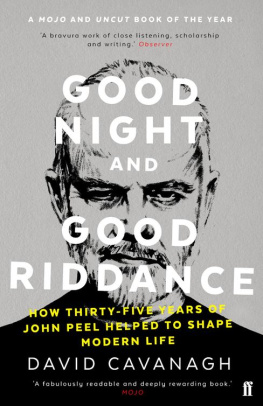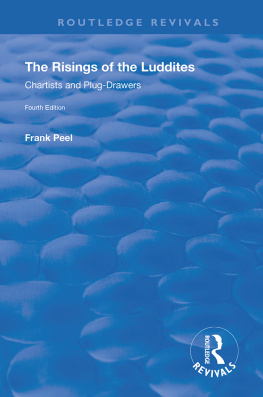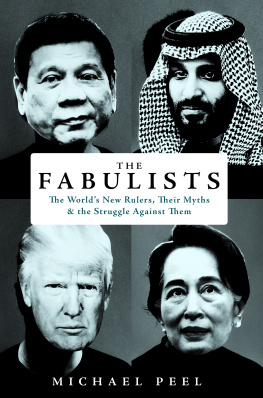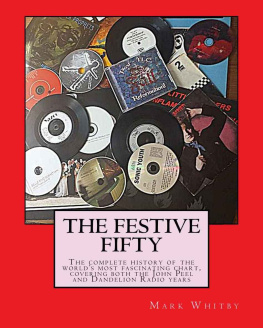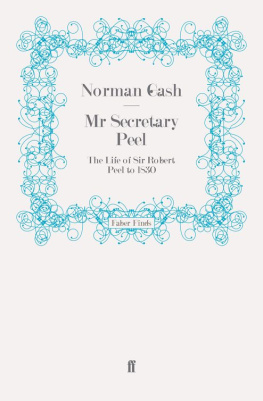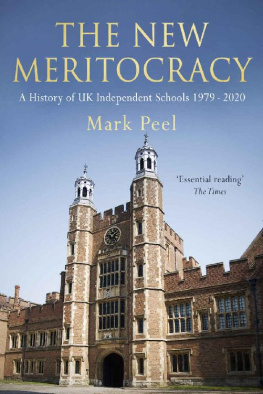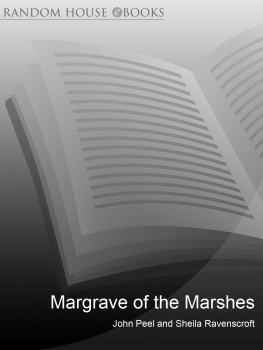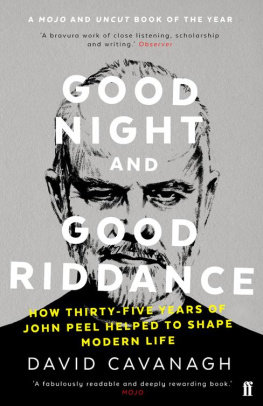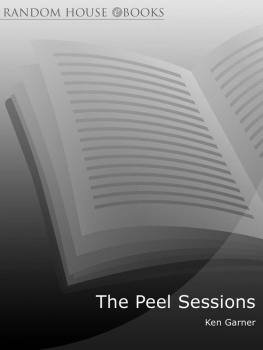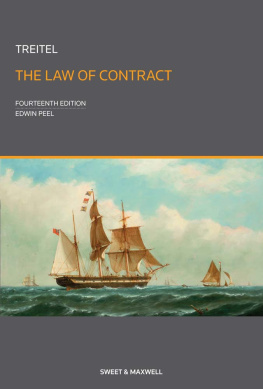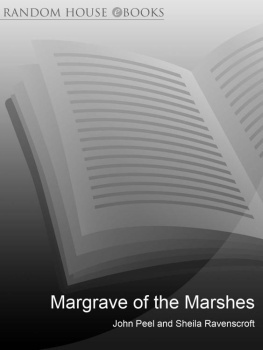Good Night and Good Riddance is a chronological history of 265 programmes presented by John Peel between 1967 and 2003. Its the story of a changing music scene, a changing radio landscape and a changing Britain. Its the story of how a shy man who played records for a living ended up having an impact as far-reaching as any rock group. The story begins with a Donovan song and ends with an event of global significance that brings Peel full circle to the Summer of Love, when his broadcasts took place against a backdrop of anti-Vietnam War protests.
A word or two about the way the book is structured. The descriptions of the 265 programmes are preceded by a list of artists whose music appears in them, as well as a news story from the day in question. These are included for a reason. For much of his career, Peel took to the air between 10 p.m. and midnight, once the days defining dramas had been played out, and often he had the unenviable job of rounding off a turbulent or harrowing twenty-four-hour period in British life. A news bulletin during one show in December 1973 began: A third bomb went off in London tonight. Another show in September 1974 was interrupted for a newsflash that Prime Minister Harold Wilson had dissolved Parliament. The rubbish was piled high in the streets when Peel played new singles by the Pretenders, the Members and the Undertones in January 1979. Were his programmes an escape route out of the darkness? Could they offer some form of illumination?
To research Good Night and Good Riddance, I listened to around five hundred Peel shows that survive in audio format, and also consulted the running orders of a further eight or nine hundred on microfilm and online. What were the criteria for selecting a show to put in the book? Perhaps it was a night when Peel discovered a future household name. Perhaps he played a piece of music so mind-bogglingly strange that I simply had to attempt to describe it. Or perhaps my attention was caught by something he said; he was a witty, thoughtful and subversive broadcaster throughout his long career.
Readers will notice that towards the end of the book the chapters cover two years instead of one. This is to give the effect of the near past coming closer into view. It should not be taken to mean that 1998 and 2002 were lesser years than 1988 and 1992, or that some years blurred into others. Also, in acknowledgement of the feast of surprises that characterised Peels best broadcasts, in which almost nothing could be foretold from a mere tracklisting, an index has been consciously omitted.
To write about Peel shows, you first need to be aware of their whereabouts and be able to hear them. The foremost Peel resource anywhere in the world is John Peel Wiki (http://peel.wikia.com/wiki/John_Peel_Wiki), where a person can easily lose several months of their life browsing endless pages of encyclopaedic facts, running orders, informative essays and mini-biographies. Look closely and you should find what you want. Its a world populated by user names and pseudonyms.
I would like to thank the following contributors to John Peel Wiki: Alan, Andrew, Andrew T, andysmith10, bbrbr57, Bill, billfromnorthwales, Bill S, Bob, bonnie43uk, Brian Hinton, brockleyal, CCM, Chris Holmes, Colin Bray, Colin Ellis, Darren, Dave, David, Decktician, deerlabsk, Doc, Dr Mango, Duff Paddy, Ed B, Eddie, Gary, gooner02UK, Gumtree Tapes, Guy Brown at U-SPACES, Hangthedj, Haze, hills1902, Isector, Jim, Jimmy, Johns corner, John Leonhards Dad, Johnpeel3904, John Peel Papers, John Stewart, Jon Horne, Julian, K, Karl, Kats Karavan, Ken Garner, Kevin (Kev), klacktoveedesteen, LeicesterJim, Lol, Lorcan, Mark C, max-dat, Mike Dick, ML, Monni Aldous, My Old Tapes, Patestapes, Paul, Peel Mailing List, Phil, ray_b2, RC, RF, Rich Less, Rob C, RobEmbleton, Rob F, Rocker, Rok, SB, SIG (Steve), Steve Lowman, Syrtis, thebarguest, thescourge, Tishbriz, Vegman, Wavey Davey, Weatherman22 (Stuart) and any tapers, collectors, sharers, uploaders, editors, re-editors, encoders, restorers and digitisers whose names have been lost to posterity. Thanks to Kris W. (http://theperfumedgarden.blogspot.co.uk) and the Yahoo Peel Newsgroup. Thanks also to the producers of the Peel shows Bernie Andrews, John Walters, John Muir, Pete Ritzema, Jeff Griffin, Chris Lycett, Jonathan Ruffle, Mike Hawkes, Alison Howe, Anita Kamath and Louise Kattenhorn and their engineers.
Im grateful to Jeff Walden for granting me access to the BBC Written Archives at Caversham Park, where I was able to scroll through the running orders of hundreds of forgotten editions of Top Gear, Friday Night Is Boogie Night, Sounds of the Seventies and the John Peel Show. For context, I looked at programmes presented by Tony Blackburn, Noel Edmonds, Emperor Rosko, Tony Brandon, Dave Cash, Ed Stewart, Terry Wogan, Jimmy Young, David Hamilton, Johnnie Walker, Alan Freeman, Anne Nightingale, Alan Black, Mike Harding, Bob Harris, Stuart Henry, Michael Wale, Dave Eager, Gary Taylor, Dave Lee Travis, Paul Burnett, David Kid Jensen, Pete Drummond, Paul Gambaccini, Tommy Vance, Mike Read, Adrian Juste, Robbie Vincent, Stuart Colman, Simon Bates, Peter Powell and Andy Peebles.
When I decided to write Good Night and Good Riddance, my first call was to Ken Garner, the author of the acclaimed book In Session Tonight (BBC, 1993), which was updated and republished as The Peel Sessions in 2007. Garner was immediately encouraging and went on to offer useful advice, not just once but in a number of subsequent emails. He is the worlds leading authority on Peel, I would guess, and I hope he feels that Good Night and Good Riddance doesnt encroach too much on his own Peel writings.
My sincere thanks go to Lee Brackstone, David Watkins and Ian Bahrami at Faber and Faber, who were sensitive and patient over a longer period than any of them probably anticipated, and to my agent Matthew Hamilton at Aitken Alexander. I could not have written the book without the support and friendship of Andrew Holmes and Penelope Chong, neither of whom I can ever thank enough. Others who played key strategic roles were Steve Beeho (deep cover and surveillance), John Mulvey (laser-eyed forensics), Phil King (IPC vault-digging), Tony Sexton (stress-free removals and disco mixes), Chris Moore (cocktails and Dropboxing), Strontium Dawg (ambient trip-hop guidance), La Vache Dangereuse (additional research) and Mark Allen at Jargon Free Computers (laptop maintenance). Thanks also to my parents.
I made use of many books, newspapers, magazines and websites along the way, which are listed in the Sources and Bibliography at the back. All the remaining conclusions, assumptions, opinions, theories and mistakes in the book are mine.
David Cavanagh
Brighton, 2015
About a mile north of Reading town centre stands Caversham Park. The grand country house, tastefully flanked by wooded pleasure grounds and set in a hundred acres of private parkland, has a Grade II listing and a history dating back to William the Conqueror. Over the centuries it has been the family seat of the Earl of Pembroke (c.1200), the home of a courtier to Edward VI (c.1580), a temporary prison for Charles I (1647) and a Georgian fortress with gardens designed by Capability Brown (c.1760).
In the 1830s it was a dilapidated ruin; in the 1920s a boys boarding school. Since the Second World War its been the headquarters of BBC Monitoring, the semi-clandestine eavesdropping wing of the British Broadcasting Corporation that tracks, translates and analyses thousands of daily news reports from around the world.

